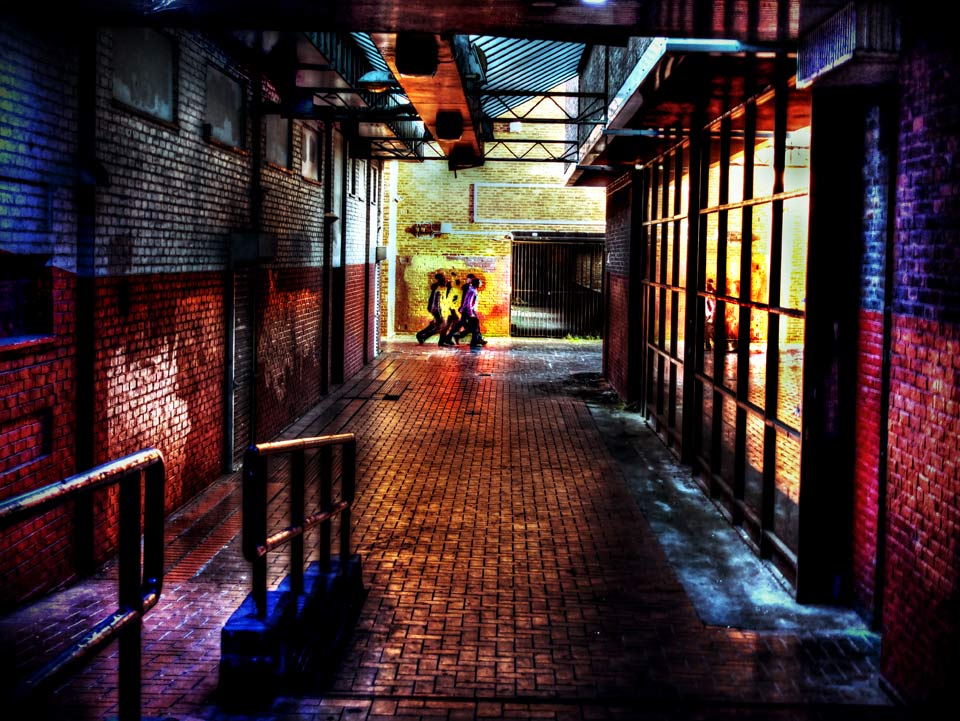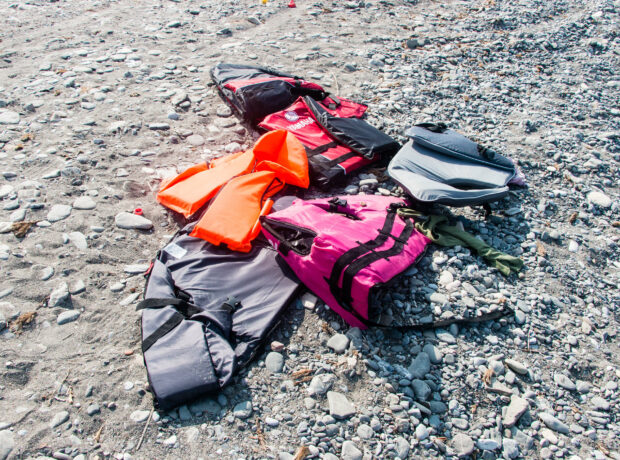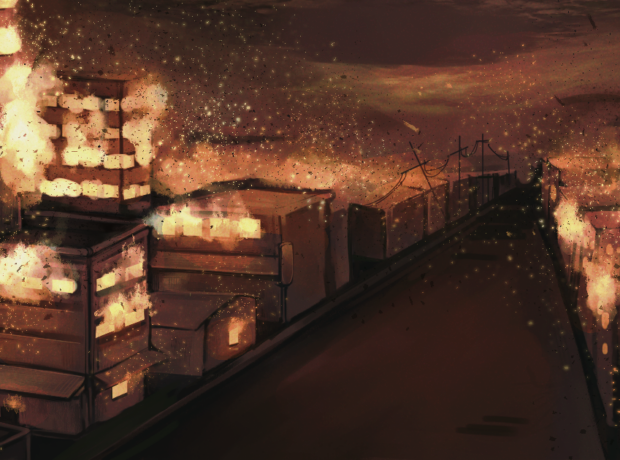Gurpreet Dhaliwal is the winner of the inaugural University of Warwick Writing Wrongs Schools’ Competition, organised by the Centre for Human Rights in Practice. This is her winning essay which she reworked during her internship with Lacuna Magazine.
Nadia and Adrian were a young couple from Eastern Europe, in their early twenties. Their lives in Eastern Europe were difficult, they barely made enough money to pay their bills. One day, a man they met as an acquaintance, said he understood their struggle to survive and offered to bring them to England where they could begin their young lives afresh. Nadia was made to believe she would be working in childcare; as a helper in a nursery for young children whilst Adrian was promised a career in construction, on a building site with good pay.
Soon after, Nadia and Adrian arrived in the UK together with the man that had promised them a better life. They hoped for a stable family life in England with the reassurance of financial security. But upon arrival, they were driven to a house in the south, where their passports were stolen from them. They were then separated and placed into two different houses. Here, they were trapped. Nadia was forced to obey every order and every command given to her by the other residents of the house. Adrian was helpless in another house where he was made to work hours and hours each day whilst his hands and feet swelled with exhaustion.
Parliament recently passed a reformed version of the ‘Modern Slavery Act’ which came into effect in March 2015. Conservative MP, James Brokenshire, who presented a draft of the bill to the House of Commons in October 2013 was quoted as saying that the act would “send the strongest possible message to criminals that if you are involved in this disgusting trade in human beings, you will be arrested, you will be prosecuted and you will be locked up.”
But there is still a ‘loophole’ in the law enforcement system which grants corrupted businesses and employers the ability to manipulate, entrap and exploit their employees. Migrant workers can be brought to the UK by their employers on ‘tied visas.’ These ‘tied visas’ deny migrant workers the right to change their employer. These people soon become victims of human trafficking; effectively exploited by the law’s inability to give them basic working rights. An amendment to the Modern Slavery Act was brought forward in the House of Lords in March 2015 to close that loophole. But this amendment was later rejected by the House of Commons.
Human trafficking is an international crime
The existence of human trafficking is further facilitated by the lack of international law. Human trafficking is an international crime; with traffickers jumping across borders to avoid detection by the authorities – the lack of international law makes it almost impossible to convict and prosecute those that participate.
To understand the extent of this organised crime in the UK, I spoke to Kerry Scarlett – a middle-aged, Irish woman with short blonde hair and glasses – she runs the Adavu Project, a project of the Birmingham Methodist Church, which supports adult survivors of modern slavery and human trafficking in the West Midlands. When I asked Kerry why more people don’t know about human trafficking she said, “One of the biggest problems we have is trying to get accurate facts around the nature and scale of the issue. So we’ve got very limited statistics to work from.”
But there is still a ‘loophole’ in the law enforcement system which grants corrupted businesses and employers the ability to manipulate, entrap and exploit their employees.
Current statistics rely on cases reported to the authorities and estimates from global experts. Therefore, we have no real figure on the number of people affected by human trafficking as many cases remain hidden. The UK Human Trafficking Centre (UKHTC) publishes quarterly and yearly statistics on human trafficking cases reported in the UK; last year, in 2015, it was found that the most common type of exploitation was labour exploitation for both adult and minor aged victims. 3266 potential victims were referred in to the National Referral Mechanism in 2015; a 40% increase on 2014. Year on year, a trend is becoming noticeable: 2014 saw a 34% increase in referrals on 2013 whilst 2013 saw a 47% increase in referrals on 2012. This increase is becoming increasingly prominent and either reflects improved awareness of the signs of trafficking or that there are more traffickers exploiting more victims – I am hesitant to believe this increase is a result of solely the former.
With the UKHTC’s statistics indicating that labour exploitation is the most common form of trafficking in the UK, I asked Kerry about the form of trafficking The Adavu Project encountered most. This is when Kerry told me the story of Nadia and Adrian (whose names have been changed to protect their identity).
Nadia and Adrian remained in this situation for months, unable to see each other; unable to even know if the other was alive.
As days and months passed, they grew increasingly desperate. Eventually, Adrian managed to escape from the house he was trapped in – he had, imprinted in his memory, the location of the house where he last saw his wife Nadia and made his way there. He found her and from there, they both fled; later arriving in Birmingham. In Birmingham, they asked around in their weak English until they found the police, whom they asked for help. However, their poor English speaking skills led the police to assume they had lost their passports, not that they had been forcefully stolen by violent traffickers.
In desperate hope, Nadia and Adrian found a Church in the centre of the city with a doorway to spend the night on – they hoped that if they stayed there, someone would find them in the morning and help. In the morning, someone did come. It was a manager who came and found the couple trembling in the cold in the Church doorway and gave them both a cup of hot tea and wrapped them in warm blankets. She listened to them tell their story – but, again, the language barrier led to misinterpretation. The manager believed that the couple’s employers took their passports but did not realise that the couple had been labour exploited. She bought them train tickets to the London Embassy where they could be sent home – this is all Nadia wanted by the time they met the Church manager: to go home. The manager sent them on their way to London and wished them luck.
It is not known what happened to Nadia and Adrian after they were referred to London by that Church manager – we don’t know if they got home, or even if they were able to reach London. It is after that Church manager had a phone call with Kerry, less than a week after the couple were referred to the London Embassy, that they both concluded the couple’s story strongly indicated signs of human trafficking and exploitation.
Unfortunately, Nadia and Adrian’s story is not dissimilar to the story of an estimated 20.9 million human trafficking victims globally. And not unlike many other stories, the signs of human trafficking are being missed. Predictions suggest the number of victims will continue to grow. This is because human trafficking has found a new source of victims, generated by the Syrian refugee crisis.
In her November 2011 essay titled, ‘Trafficking Risks for Refugees,’ Executive Vice President of the Lutheran Immigration and Refugee Service in Baltimore, Maryland, Anne P Wilson writes: “War creates trafficking victims.” She goes on to explain how “Zones of conflict are characterized by a lack of basic human security, where lawlessness rules.”
The spring of 2011 saw anti-government protests across Syria being met with a violent response from President Assad’s authoritarian regime. This became the catalyst required to spark the Syrian Civil War which has led to the displacement of more than 50% of the country’s population. The threat of trafficking to desperate refugees, fleeing their war-torn country is now leading to “patterns and economies of trafficking” being “established and nourished” claims Wilson. Refugees are people running for their lives from homes battered with bombs; neighbourhoods crumbling to dust. They are human beings attempting to survive the direst of conditions – all through no fault of their own.
At a UN summit, in September 2016, the New York Declaration for Refugees and Migrants was established. The declaration stated: “We recognise that refugees and migrants in large movements are at greater risk of being trafficked and of being subjected to forced labour.” It goes on to declare that the UN “will… vigorously combat human trafficking and migrant smuggling with a view to their elimination” and that they will “work to prevent human trafficking among those affected by displacement.” The UN state that they will have set out a plan to fulfil this declaration by 2018.
We recognise that refugees and migrants in large movements are at greater risk of being trafficked and of being subjected to forced labour
The UN Refugee Agency (UNHCR) recently found that 2016 has been the deadliest year on record for refugees crossing the Mediterranean Sea with 3,740 lives lost so far in 2016; not far from the 3,771 lives lost in all of 2015. The organisation states that “people smugglers are today often using lower-quality vessels” which increases the likelihood that the boat will not survive the journey; the refugees fleeing towards the beacon of hope that is Europe, also perishing.
It is no surprise that traffickers are able to exploit failures in the hurried attempts of nations around the world to manage the great influx of migrants arriving in Europe and the countries neighbouring Syria. Wilson identifies that “One of the most serious risks that refugees face if they have not been identified and registered… is their lack of legal status.” The unregistered status of many Syrian refugees denies them access to financial aid, medical care and opportunities to be resettled. In May 2016, UK Independent Anti-Slavery Commissioner Kevin Hyland OBE wrote an article for The Independent titled, “There’s only one group who benefits from the refugee crisis: human traffickers.” In the article, Hyland writes: “Traffickers are agile, business minded and opportunistic” and will prey on vulnerable refugees desperate to escape conflict.
Recently, the decision was made to close the migrant camp in Calais, commonly referred to as ‘the Jungle.’ Speaking on BBC Radio Four’s Today programme, on the first day of the clearance of the camp, Labour MP Yvette Cooper warned of dangers of unaccompanied children being left in the camp alone, especially overnight. Cooper warned that “once the clearances start, we know that there is a significant risk that many of those children or young people just disappear” because they “slip into the arms of the smuggler gangs, the traffickers.” Worse, after French officials declared the camp was empty; charities stated that about 100 young people were left with nowhere to go. As Yvette Cooper warns, these young people could “just disappear” into the hands of traffickers and smuggler gangs.
There is a significant risk that many of those children or young people just disappear
BBC Panorama conducted an undercover investigation in July 2016 which found that Syrian child refugees in Turkey are being used in sweatshops to manufacture clothes for British corporations such as Marks and Spencer.
The documentary introduces us to Amena and her children, a family which fled Syria when their neighbourhood was bombed. Amena’s husband found work in the textile industry doing 13-hour shifts; it was on one of these shifts that he collapsed over his machine, dead. Amena briefly touches the bridge of her nose as she battles her tears; telling the journalists she now sends her three oldest children to work which has become a “choice between life and death.” The family now live in a small, cramped flat in Istanbul; the children have been cheated out of their childhood and education – they must work if they are to survive.
Later we meet thirteen-year old siblings Oday and Rasha, who live with their mother. They are Syrian refugees that have escaped from a small village outside Aleppo. Their mother struggles to wake them up every morning as they are exhausted from 60 hour working weeks, earning the equivalent of just 70p an hour. As Rasha starts her shift at work, her brother begins his tireless search for a job in the sweatshops of Istanbul. He later returns by dinner time; telling how he and his friend “couldn’t find a job.” Oday’s lip quivers as he tries to avoid weeping on camera, “I want to find another job because I won’t be able to live.” He cannot stop the tears that stream down his face as he considers the reality for his family of three, struggling to survive as refugees in Turkey’s capital.
Banner photo by Sam Leighton.



